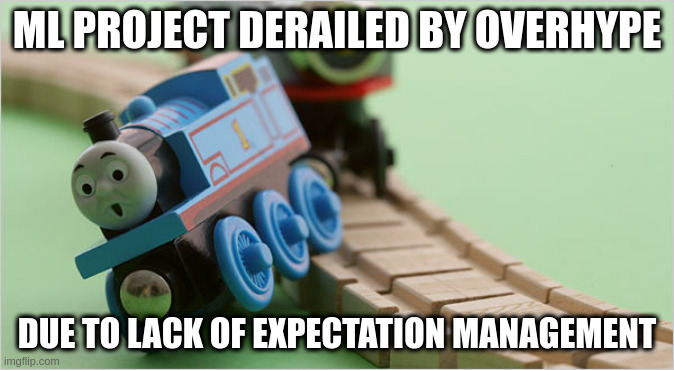Last Friday I had the pleasure of speaking with Alexey Georgev on DataTalks.club about Dataset creation. I am sharing my data creation process here, so you don’t need to watch me talk for an hour.
My cookbook for data labeling
- define success in business terms
- map the data with stakeholders for buy in
- rapid prototype from data to deployment
- iterate on dataset creation
Techniques to get more data bang for buck:
- weak supervision
- active learning
Considerations around dataset creation:
- in-house vs crowdsourcing
Tool recommendations
My cookbook for data labeling
Defining success in business terms
A good dataset is one that creates business value. Making sure stakeholders, domain experts, and engineers are on the same page is hard. I find sharing a mock of the model and data can really help move stakeholders understand what’s possible. Sharing an initial annotations with stakeholders can give quick feedback around conceptual errors and reduce the risk of overhyping the project.

Map the data with stakeholders for buy in
I show the data to stakeholders as a user interview. I am looking to see how usable is the data and strengthen my conceptual understanding of the business problem. It’s a successful interview if I know more about how experts understanding of the problems. So for example for Comtura to model sales processes, whenever I hear the importance of qualification I would link that with qualification methodologies.
I like having 2 mindmaps one with the expert’s conceptual view and one view around how can these expert concepts be modelled. For example maybe I will model sales qualification as a span classification problem where some spans are related to sales qualification, maybe instead I model it as a paragraph level document classification problem.
Rapid prototype from data to deployment
Perfect is the enemy of done. As a data scientist there are so many interesting ways a model could be improved. If you think your model is feasible then there’s no need for further improvements until it hits production. Speeding up the data -> model -> business value flow is essential otherwise how do you know if your data is creating business value?
Iterate on dataset creation
If you feel you are on the right track based on your prototype you can start refining your dataset creation process based on expert and user feedback. I like to have 3 steps in creating a dataset:
- annotation
- data review
- dataset creation feedback
Annotation
Creates labelled data
Data review
Review the created data qualitatively with a supervisor checking output periodically and quantitatively with inter annotator agreement and model metrics
Dataset creation feedback
I like having an annotation booklet. The annotation booklet is a living document where I keep task defintions, ambigous examples, and past discussions. With periodic feedback sessions where we discuss challenging samples and process improvement possibilities.
Techniques to get more data bang for buck
Weak supervision is a way to generate weak labels for unlabelled data programatically. Weak supervision has the most potential to improve your dataset creation process. Labelling functions generate weak labels from unlabelled data. A labelling function can have good signal for 2-3% of your data. With such a wide coverage labelling functions can improve performance a lot. Labelling functions can also be easily explained to domain experts allowing experts to improve your labelling functions.
Active learning is a form of model in the loop annotation where low confidence samples are annotated to improve model confidence. I have used prodigy in the past for this. It worked sometimes, sometimes not.
Considerations
In-house vs crowdsourcing
For quick prototype or if quality not so important crowdsourcing works well as you can scale your tasks to a large pool of annotators. I prefer in-house annotation though as it allows you to build a relationship with annotators. You can retain the best performing annotators and iterate on your annotation process way easier with in-house annotation. In my experiece the long term cost / sample also favours in-house annotators as crowdsourcing requires 2/3x more levels of review or annotation due to low inter annotator agreeement.
Tool recommendations
Open source: I recommend snorkel to get started with weak supervision. Doccano and Label Studio are great general annotation interfaces
Paid: Prodigy is a great annotation tool with active learning support from the creators of spacy
